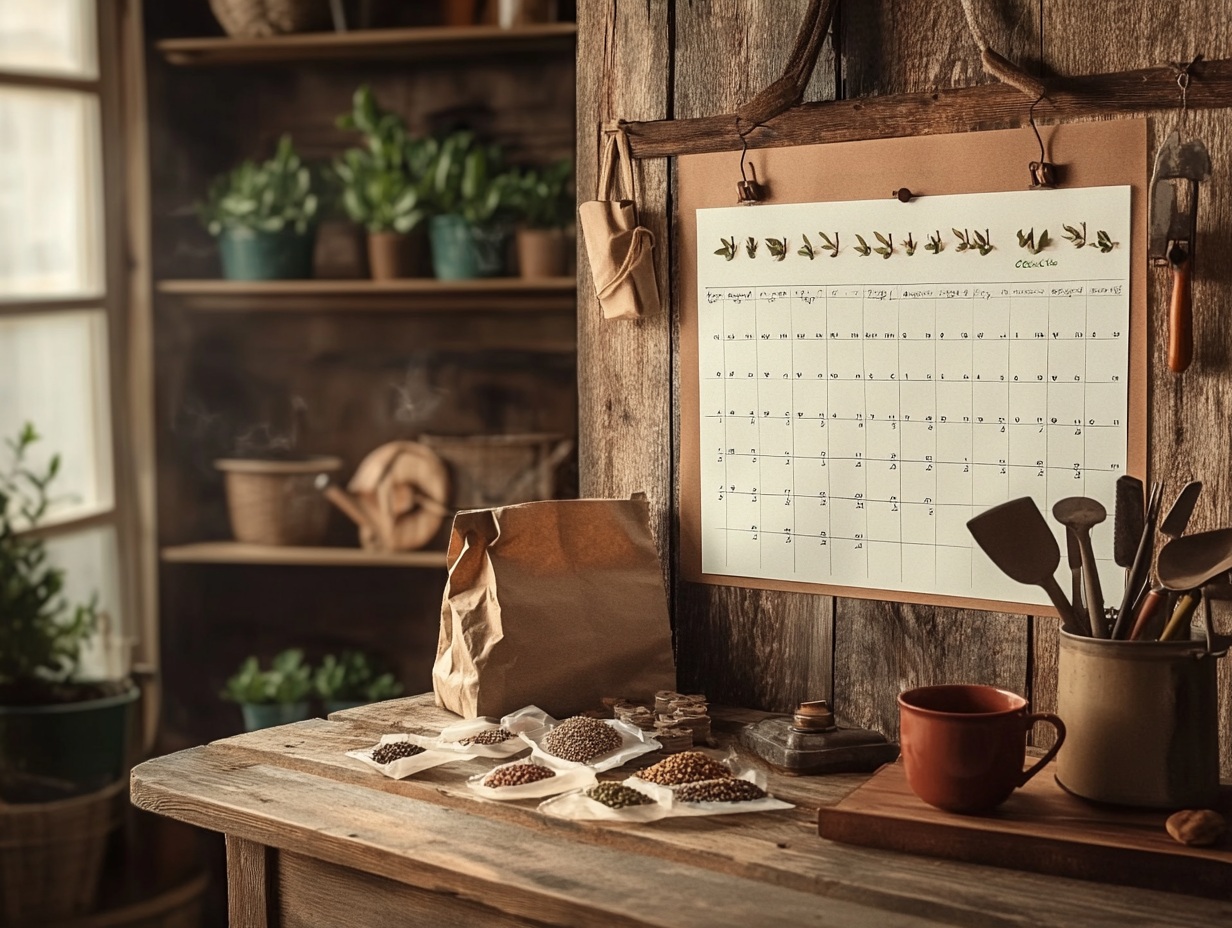Seasonal Tasks to Maximize Your Vegetable Harvest
Planning is the cornerstone of a successful garden, and knowing how to create a garden calendar is essential for maximizing your vegetable harvest throughout the year. A well-organized garden calendar not only helps you stay on top of planting and harvesting schedules but also ensures you complete essential tasks at the right time for optimal plant growth. This guide will walk you through creating a comprehensive garden calendar, covering seasonal tasks and tips to keep your vegetable garden thriving.
Why Create a Garden Calendar?
A garden calendar acts as your roadmap for gardening success. By scheduling tasks and tracking seasonal activities, you can:
- Ensure timely planting and harvesting: Avoid late or early planting that could impact yields.
- Plan for crop rotation: Maintain soil health by rotating crops each year.
- Organize garden maintenance tasks: Plan fertilizing, mulching, and pest control to avoid last-minute scrambles.
- Improve efficiency: Reduce the risk of overlooking crucial garden chores.
Essential Components of a Garden Calendar
A successful garden calendar includes more than just planting dates. It incorporates various elements that contribute to a productive and healthy garden.
Planting and Sowing Dates
The foundation of any garden calendar is knowing when to plant your crops. Factors to consider include:
- Frost Dates: Identify your local last and first frost dates to schedule plantings accurately.
- Growing Zones: Use the USDA Plant Hardiness Zone Map to determine which crops are best for your region.
- Planting Windows: Schedule early, mid, and late-season plantings to ensure continuous harvests.
Seasonal Tasks
Dividing your garden chores by season ensures you stay organized and tackle essential tasks at the right time.
Spring: Preparation and Planting
Spring is when the garden comes back to life, making it the busiest time for most gardeners.
- Prepare the Soil: Test and amend soil with compost or organic matter.
- Direct Sow Early Crops: Plant cool-season vegetables like lettuce, peas, and spinach.
- Start Warm-Season Seeds Indoors: Tomatoes, peppers, and eggplants can be started indoors to get a head start.
- Weed Control: Begin removing weeds early before they have a chance to spread.
Summer: Growth and Maintenance
During summer, the focus shifts to maintaining plant health and preparing for harvests.
- Monitor Water Needs: Water deeply and regularly to keep the soil moist, especially during heatwaves.
- Pest Management: Check plants for signs of pests and diseases. Use organic solutions like neem oil or insecticidal soap.
- Mulching: Apply mulch to retain soil moisture and control weeds.
- Harvest Early Crops: Pick crops like zucchini, tomatoes, and cucumbers to encourage continued production.
Fall: Harvest and Preparation for Winter
Fall is the time for gathering the final harvests and preparing your garden for the colder months.
- Harvest Late Crops: Collect root vegetables like carrots and beets and late-season greens such as kale and Swiss chard.
- Clean Up Debris: Remove spent plants to prevent the spread of diseases and pests.
- Cover Crops: Plant green manure crops like clover to enrich the soil over winter.
- Protect Perennials: Apply mulch around perennial plants to insulate roots against frost.
Winter: Planning and Maintenance
Even in the off-season, there are tasks that can set your garden up for success in the coming year.
- Plan Your Layout: Sketch out the upcoming year’s garden layout, including crop rotation plans.
- Clean and Sharpen Tools: Prepare tools for the next season to avoid delays in spring.
- Order Seeds: Select seeds early to ensure availability for planting.
- Start Indoor Projects: Consider starting herbs or microgreens indoors for fresh produce year-round.
Using a Digital Garden Calendar
Leveraging digital tools to create your garden calendar can provide added flexibility and functionality.
Benefits of Digital Calendars
- Reminders and Alerts: Set notifications for specific tasks like watering, fertilizing, and planting.
- Access on the Go: Digital calendars can be updated and accessed from any device.
- Customization: Easily adjust schedules for unexpected weather or garden changes.
Tip: Apps like Google Calendar or gardening-specific software such as Plan-A-Garden can streamline your gardening schedule.
Customizing Your Garden Calendar for Crop Rotation
Incorporating crop rotation into your garden calendar helps maintain soil health and reduce pest and disease build-up.
The Importance of Crop Rotation
Crop rotation involves planting different types of vegetables in different sections of your garden each year. This practice:
- Prevents soil depletion: Alternating crops with different nutrient needs helps maintain balanced soil fertility.
- Reduces pests and diseases: Interrupts the life cycles of pests that target specific crops.
How to Plan Crop Rotation
Divide your garden into sections and assign a plant group to each section for the season:
- Group 1: Legumes (beans, peas) that fix nitrogen into the soil.
- Group 2: Leafy greens (lettuce, spinach) that consume moderate amounts of nitrogen.
- Group 3: Fruiting plants (tomatoes, peppers) that require rich soil.
- Group 4: Root vegetables (carrots, beets) that help aerate the soil.
Rotate these groups each year to maximize soil health and productivity.
Essential Tools for Your Garden Calendar
To create a comprehensive garden calendar, consider these tools:
- Wall Calendar or Planner: A visual calendar can be used for jotting down quick notes and task reminders.
- Gardening Apps: Use apps like Gardenate or Seedtime for detailed planting schedules and climate-based recommendations.
- Spreadsheet Software: Programs like Microsoft Excel or Google Sheets can be used to track planting dates, expected harvests, and seasonal tasks.
Adding Notes and Observations
A truly effective garden calendar should include space for notes and observations. Keeping track of what worked well and what didn’t can help refine your gardening strategies over time.
What to Document
- Plant Varieties: Note which varieties performed best in different seasons.
- Weather Patterns: Record any extreme weather conditions that affected plant growth.
- Pest and Disease Issues: Document any pest outbreaks or diseases and the measures taken to control them.
- Yields: Record harvest quantities to plan future plantings more effectively.
Connecting Your Garden Calendar with Other Gardening Strategies
Link your garden calendar with other best practices, such as companion planting and natural pest control.
Integrating Companion Planting
Plan your garden layout using companion planting to maximize plant health and productivity. For instance, planting marigolds alongside tomatoes can help deter nematodes and other pests. For more detailed strategies, read our post on “Companion Planting in the Vegetable Garden: Boosting Yield and Harmony Naturally”.
Scheduling Organic Pest Control
Plan regular pest control measures and inspections throughout your calendar to prevent infestations before they start. Natural solutions like introducing beneficial insects or using organic sprays can be scheduled for specific months or seasons.


Leave a Reply